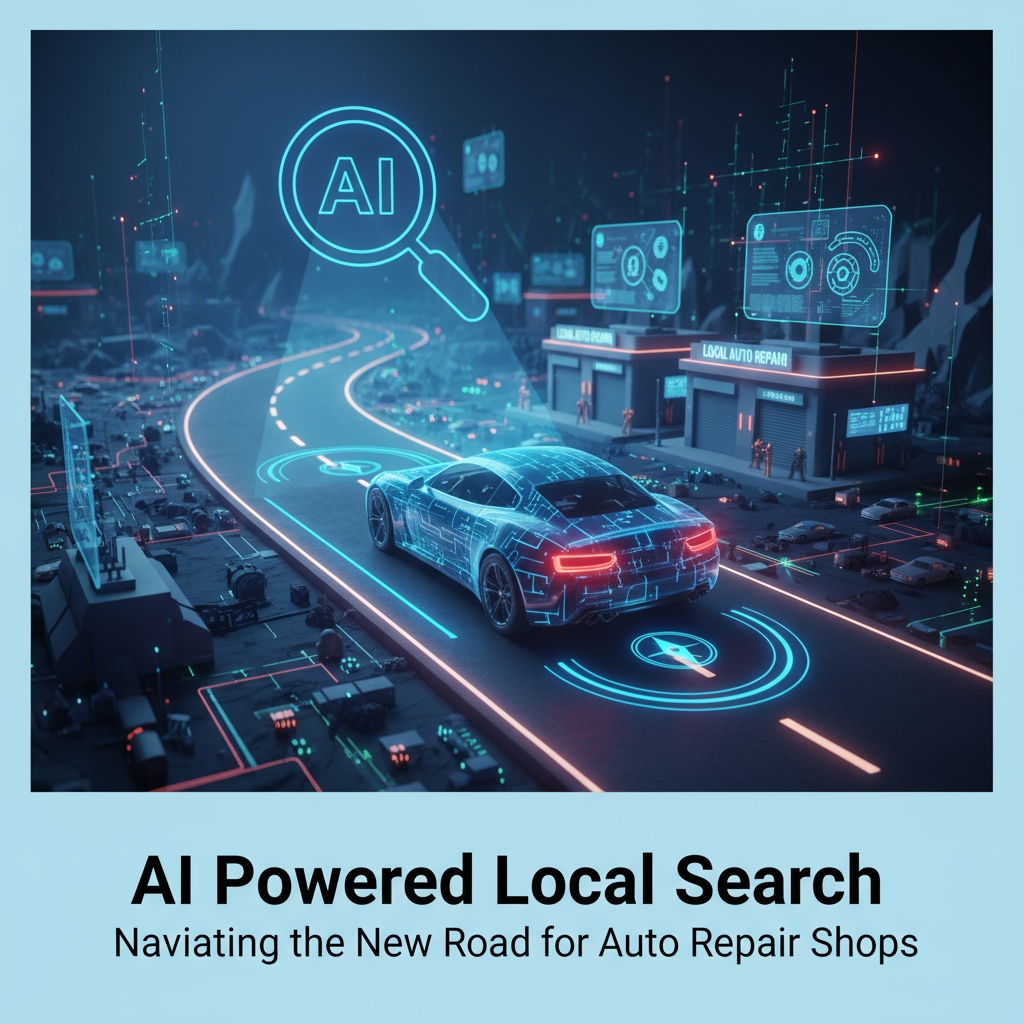The automotive repair industry is experiencing a transformative revolution driven by artificial intelligence (AI) technologies. This technological evolution is fundamentally changing how repair shops operate, communicate with customers, and perform diagnostics and repairs. In this comprehensive guide, we’ll explore how AI is reshaping the automotive repair landscape and providing unprecedented opportunities for efficiency, accuracy, and customer satisfaction.
The Digital Transformation of Service Writing
The traditional role of service advisors is evolving dramatically with the introduction of AI-powered systems. These sophisticated platforms are eliminating many of the time-consuming administrative tasks that previously occupied service writers’ time, allowing them to focus on what matters most: customer interaction and service quality.
Modern AI service writing systems can instantly access complete vehicle histories, including previous repairs, maintenance records, and manufacturer-specific information. This comprehensive data access enables service advisors to make more informed recommendations and provide more accurate repair estimates. The system can analyze patterns from thousands of similar repairs, considering factors such as:
- Vehicle make and model specifications
- Common repair patterns
- Parts availability
- Current shop capacity
- Technician expertise and availability
- Seasonal variations in repair times
This data-driven approach results in more accurate time estimates and pricing, leading to improved customer satisfaction and better resource allocation. Additionally, these systems can automatically generate detailed repair orders, reducing paperwork errors and ensuring consistent documentation across all service operations.
Revolutionary Inventory Management
One of the most significant challenges in automotive repair has always been inventory management. AI-powered inventory systems are transforming this crucial aspect of operations by implementing predictive analytics and automated ordering systems.
Smart inventory management systems can:
1. Predict Parts Requirements
- Analyze upcoming scheduled appointments
- Review historical repair data
- Consider seasonal repair patterns
- Account for local vehicle population trends
2. Optimize Stock Levels
- Calculate optimal minimum and maximum stock levels
- Consider supplier lead times
- Account for parts obsolescence risk
- Balance storage costs with availability needs
3. Automate Ordering Processes
- Generate purchase orders automatically
- Maintain relationships with multiple suppliers
- Compare pricing across vendors
- Track order status and delivery times
4. Monitor Usage Patterns
- Track parts consumption rates
- Identify trending repairs
- Alert for unusual usage patterns
- Generate usage reports for business planning
Advanced Diagnostic Capabilities
Perhaps the most impressive application of AI in automotive repair is in the realm of diagnostics. Modern AI-powered diagnostic tools are revolutionizing how technicians approach problem identification and resolution.
These sophisticated systems can:
1. Analyze Complex Data
- Process multiple sensor inputs simultaneously
- Compare against manufacturer specifications
- Identify patterns in system behavior
- Consider historical repair data
2. Suggest Repair Solutions
- Provide probability-ranked diagnosis options
- Generate step-by-step repair procedures
- Access technical service bulletins
- Share successful repair solutions across networks
3. Support Technician Decision-Making
- Offer real-time guidance during repairs
- Provide interactive wiring diagrams
- Access up-to-date repair information
- Suggest required tools and equipment
4. Learn and Improve
- Update diagnostic databases with new repair solutions
- Adapt to new vehicle technologies
- Incorporate technician feedback
- Refine accuracy through machine learning
Digital Documentation and Customer Communication
AI-powered documentation systems are transforming how repairs are recorded and communicated to customers. These systems provide unprecedented transparency and clarity in the repair process.
Key features include:
1. Visual Documentation
- Automated photo and video organization
- AI-assisted damage identification
- Real-time sharing with customers
- Before and after repair comparisons
2. Digital Inspection Tools
- Standardized inspection procedures
- Voice-to-text capabilities
- Automated checklist generation
- Integration with repair orders
3. Customer Communication
- Automated status updates
- Real-time repair approval requests
- Digital estimate delivery
- Multi-language support
4. Quality Control
- Repair procedure verification
- Safety check documentation
- Parts installation confirmation
- Final inspection records
Performance Analytics and Business Intelligence
AI analytics tools provide shop owners and managers with unprecedented insight into their operations. These systems can track and analyze numerous performance metrics:
1. Technician Performance
- Efficiency rates by repair type
- Quality metrics
- Training needs identification
- Productivity trends
2. Shop Operations
- Bay utilization rates
- Equipment usage patterns
- Work flow optimization
- Resource allocation
3. Customer Metrics
- Satisfaction rates
- Return customer frequency
- Service interval compliance
- Communication effectiveness
4. Financial Performance
- Revenue per repair order
- Parts margin analysis
- Labor efficiency
- Overall profitability metrics
Implementation Considerations
While the benefits of AI integration are clear, successful implementation requires careful planning and consideration of several factors:
1. Infrastructure Requirements
- Network capabilities
- Hardware requirements
- Data storage solutions
- Security measures
2. Training Needs
- Staff technical training
- Customer service adaptation
- Process change management
- Ongoing support requirements
3. Integration Considerations
- Existing system compatibility
- Data migration requirements
- Workflow modifications
- Communication protocols
4. Return on Investment
- Implementation costs
- Expected efficiency gains
- Customer satisfaction improvements
- Revenue growth potential
Future Implications
The integration of AI in automotive repair shops represents more than just a technological upgrade; it’s a fundamental shift in how repair operations are conducted. As these systems continue to evolve, we can expect to see:
- Increased diagnostic accuracy
- Improved repair efficiency
- Enhanced customer satisfaction
- Better business profitability
- Reduced environmental impact through improved parts management
- More effective technician training and development
Conclusion
The AI revolution in automotive repair is creating unprecedented opportunities for shops to improve their operations, enhance customer service, and increase profitability. By embracing these technologies, repair shops can position themselves for success in an increasingly competitive market.
The key to successful implementation lies in understanding that AI tools are not replacements for skilled technicians and service advisors, but rather powerful aids that enhance their capabilities. When properly implemented, these systems create a more efficient, accurate, and customer-focused repair operation that benefits all stakeholders.
As the automotive industry continues to evolve with increasingly complex vehicles and systems, the role of AI in repair operations will only grow in importance. Shops that embrace this technological revolution today will be better positioned to meet the challenges and opportunities of tomorrow’s automotive repair landscape.




